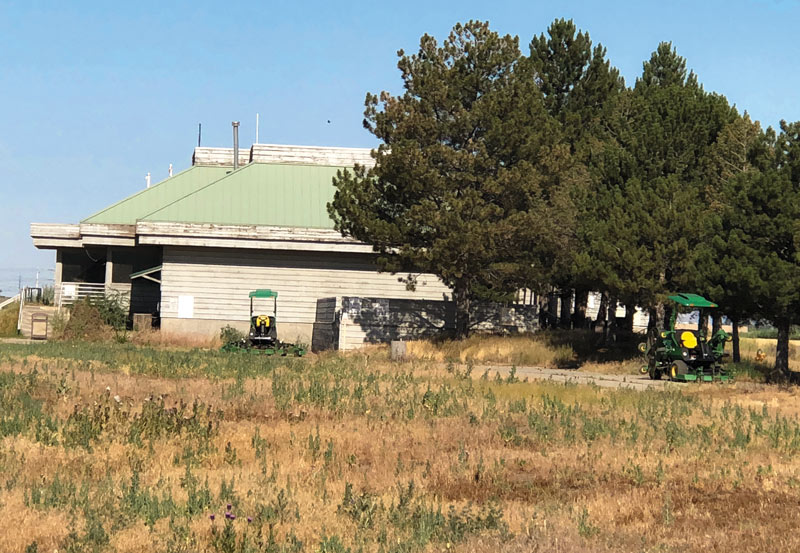
The mowers outside the old clubhouse of Wingpointe Golf Course in Salt Lake City are currently used by employees of the Salt Lake City Airport — which is next to the property — to periodically mow down weeds. The golf course has sat abandoned since 2015. Photo by Terry Buchen
In the age of the coronavirus, golf’s various governing bodies — GCSAA included — have done an admirable job advising course managers and owners on how to strip down maintenance practices to adhere to government restrictions and altered modes of operation. Individual superintendents have done likewise, sharing useful, homegrown information across their own communication networks.
At the beginning of April, some 44% of the nation’s golf courses were still allowing play to some extent, according to the National Golf Foundation. That percentage had grown to well over 90% by the middle of May, GCM’s deadline for this issue. Those are encouraging numbers when you compare them with the number of restaurants, barber shops and shopping malls adversely impacted by stay-at-home orders, for example.
As the nation grappled with the complexities of restarting or otherwise reviving recognizable patterns of behavior — social, economic and otherwise — golf appeared poised to lead the comeback. Quarantines and shelter-in-place orders had people more stir-crazy and bored than ever, after all. Golf is one of the few activities already tailor-made for physical distancing. And warmer weather only added to the attractiveness of a day on the links.
Superintendents who dealt with temporary closures will hold tight to those positives. The work they did during the heart of the restrictions was done with the understanding that one day, somehow, golfers would return. It was a presumption underlying all the advice floating around, be it from the R&A or the superintendent down the road — how best to maintain a course, with a skeleton crew, until golf resumes.
But what if that never happens? Despite hopeful signs, it seems certain the fallout from the coronavirus pandemic will be substantial. Golf was already experiencing a net loss of some 150 golf courses per year following the economic recession of 2008. The current economic climate has the potential to make those figures pale in comparison.
While it’s impossible to know the full extent of the damage this pandemic will ultimately leave behind with regard to golf course closures, it’s almost certain to inflate the annual net loss. And even among the majority of courses that don’t close, the effects of all of this will be significant. Former PGA Tour agronomist and turf consultant Terry Buchen, CGCS Retired, MG, notes that 12 years after 2008, many of the golf courses he sees today are still coping with the effects of maintenance deferred since 2008.
In the early days of the current crisis, as superintendents attempted to sort out what level of maintenance was allowed and what wasn’t, more than a few fielded questions from worried green committees and ownership groups about what exactly would happen to their golf course without maintenance. And those questions remain as golf and the world in general move into an uncertain future.
So, following that lead, what if we detach ourselves from the idea that golfers are ever coming back? What happens to those properties, those soil profiles, the specific spectrum of flora, the overall environment of a course going forward?
Brave new worlds
“Golf courses are great natural environments, but they are managed, and I think that will become very apparent, very quickly,” says Jason Straka, a partner with Ohio-based Fry/Straka Golf Course Design. “The best architects are the ones who take advantage of what nature gives them. That’s the line, right? And where that has been done, those aspects will remain long after the golfers have gone.
“For example, the vistas. If you have leveraged sweeping vistas on a property or otherwise created them (through tree removal, mounding, etc.), those will be maintained, at least for a while. You don’t need to be a golfer to appreciate walking across a beautiful rolling piece of terrain. That doesn’t change.
“The other thing courses will always offer nongolfers is flexibility,” Straka says. “Here’s what I mean by that: In China, where we’ve worked quite a bit, we’ve told people that in times of dire need, you cannot take a shopping mall and easily convert it back into productive farm fields, for example. With a golf course, you can.”
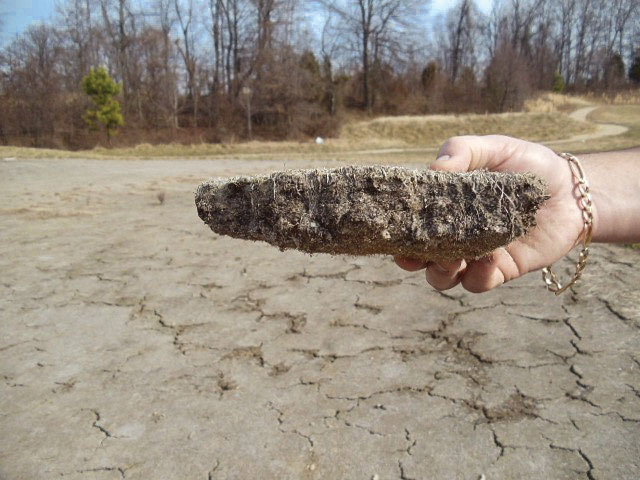
A plug from a push-up green at Oak Creek Club in Upper Marlboro, Md., after more than a year without maintenance. Photo by Terry Buchen
The Chinese example is a relevant one here. After reopening the country to capitalistic ideas in the 1990s, Chinese developers went on a 20-year course-building spree. Starting in 2014, however, President Xi Jinping made it clear that golf was no longer a favored activity nor development practice. Over the next several years, more than 100 of the 500 courses in the country were shut down indefinitely.
Many of those golf courses were in fact repurposed, as Straka has theorized. This had been the plan of many Chinese developers all along: Unsure of what to do with properties they had acquired, golf proved a practical place holder. It employed local workers, which appeased local bureaucrats (from whom the developers had acquired the land). In an ideal world, those courses also made some money until such time that a more lucrative or practical use for the land was divined.
Bottom line: There are dozens and dozens of former golf courses in China that have gone fallow, with no real plans to reopen. How fast and in what manner did nature reclaim them?
The long road back
Roger Goettsch, CGCS, had a front-row seat to one example. He spent 10 years as superintendent at Shanqin Bay Golf Club on the subtropical island of Hainan, which is part of China. Shanqin Bay was considered the finest course in China pretty much from the day it opened in 2009. It was also the first Chinese course to crack various world top-100 lists.
In 2017, however, the Chinese central government took issue with the permitting the club had secured for its 17th hole, a majestic seaside par 4. Goettsch was obliged to let the hole go; he even planted casuarina pines in the fairway. He subsequently brought the hole back — at which point the club, fearful of government threats, abandoned the hole once again.
“So, I’ve been through this process already,” says Goettsch, a 42-year GCSAA member who is now director of golf course operations at Coto de Caza Golf & Racquet Club in Trabuco Canyon, Calif. Through the first several weeks of the pandemic, play was not allowed at Coto de Caza, but course maintenance was. Coto de Caza opened for play, with restrictions, in late April.
“We did nothing for an entire month on 17 (at Shanqin Bay),” Goettsch says. “Then we came in and removed all the trees, shaved the 3-inch fairways down, and brought the hole back into playable condition. It took us an entire month at full staffing to do that, but we had optimal weather conditions. If you don’t have that, it will take longer.
“I kept the irrigation on, and that’s a huge factor in all this. I’m going to say that with no chemicals, no fertilization, no irrigation, no inputs, you could recover a golf course that has been 60 days closed. And it would take you a minimum of 45 days to get it back — in that environment. And that makes a huge difference, of course. In a cooler environment, like the northern part of the U.S., you can let a course go longer. But the bentgrass is going to go south a lot faster. Climate is a huge factor, obviously. In Houston, you’re going to have a lot of humidity and rainfall and disease pressure compared to Palm Desert.”
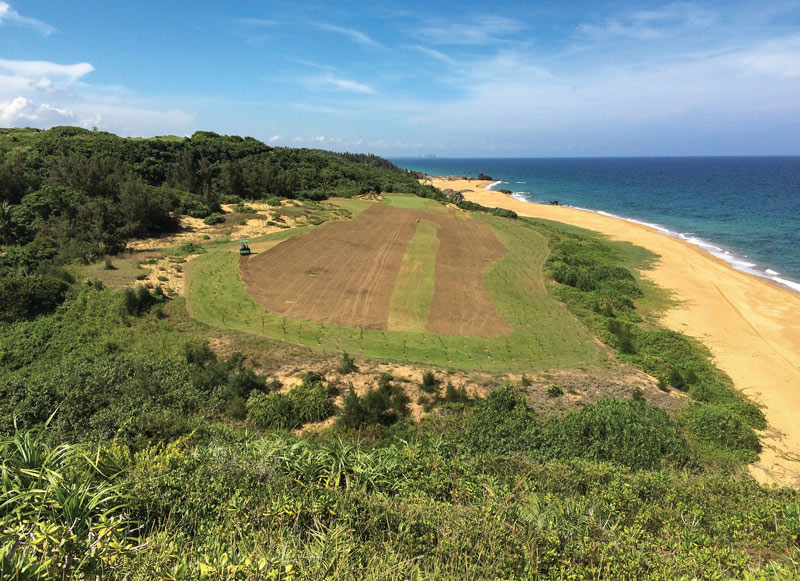
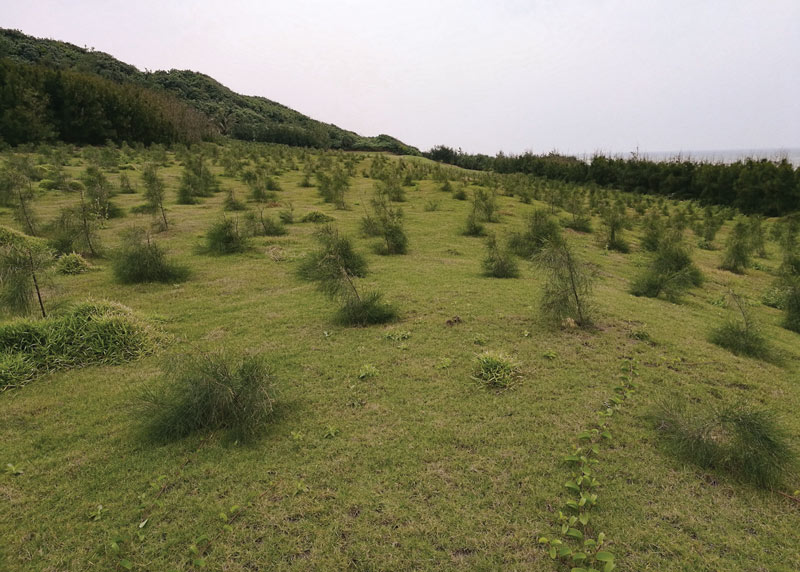
Roger Goettsch, CGCS, removed the 17th hole at Shanqin Bay Golf Club from play, brought it back, and then removed it again because of permitting issues with the Chinese government. Returning the hole to nature included planting casuarina pines in the fairway (bottom). Photos by Roger Goettsch
“Your critical period up north is June, July and August,” Goettsch says. “If you don’t irrigate, you’re just going to lose everything. In April, you’re just coming out of dormancy. They could go a month right now (in late spring) and not do a lot and be OK — but if this extends into June, that’s a whole different ballgame.
“At some point in time, it makes no sense to fix what you have. On an old golf course with 4 inches of thatch on the greens and other drainage issues, it makes even less sense. Eventually, it makes more sense to strip it all off, replant and grow it back in.”
Hope springs eternal
It’s telling to listen to Goettsch and others speak on this topic. It’s difficult for them to fully separate the golf course from golfers. In some ways, it’s a sort of macabre thought experiment. To them, even with courses closed for months or years, it’s the prospect of reopening — of golfers eventually playing those courses at some point in the future — that animates the discussion.
“I was on a project in San Antonio that was closed for several years. There was no way we could recover the golf course after a certain period of time without a full-blown renovation,” Goettsch says. “You’ve got sapling trees growing everywhere, all kinds of weeds. It more resembled a pasture, not a golf course. It was like, ‘Where do we even begin?’
“And most of the issues were below ground, to be honest with you. The root problems with all the turf were massive. The drainage would be a huge mess, too, filled up with roots and plant matter. When you let nature take over in a case like that, things get big, and root systems go deep, deep, deep. Everything in the ground — which you don’t even see, of course — gets really bad. Everything down there would be subjected to damage and would need to be redone.
“Irrigation could be saved,” Goettsch says, “but your valves are the key thing there. If you don’t use them for a time, maybe a year, they’d not be usable — though that would depend on the quality of the valve.”
Any golf course superintendent who has been around long enough (architects too) has some experience with courses that have gone fallow. But they all come at those situations with the intention of restoring golfers to the properties. When examining the idea of a golf course without golfers, one has to really keep them on point.
Buchen is working right now on the redevelopment of a course that once sat beside the airport in Salt Lake City. Well, technically it’s still there — it has just been closed to golfers since 2015.
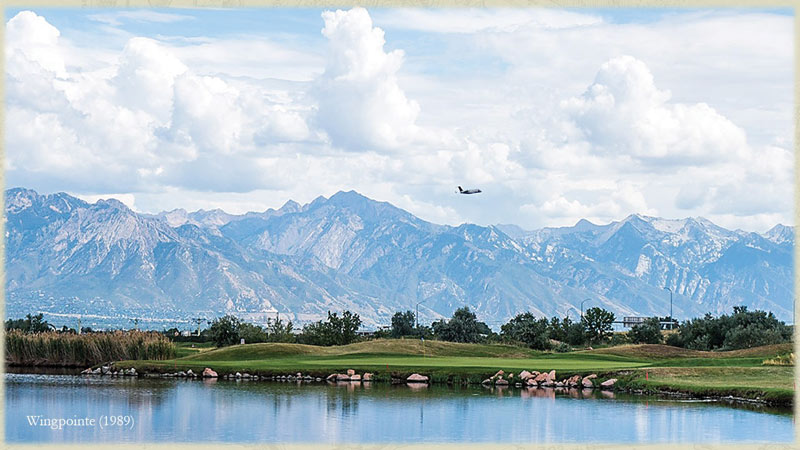
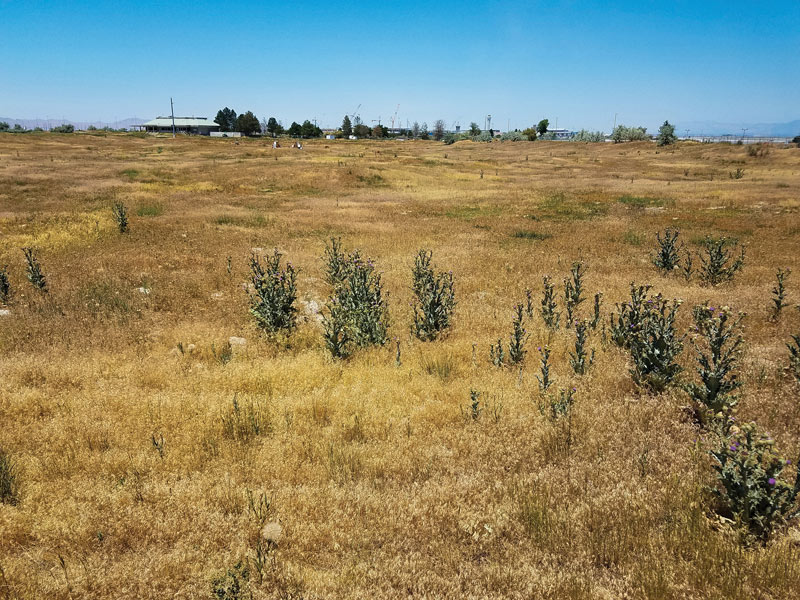
Wingpointe Golf Course in Salt Lake City, designed by Arthur Hills and Steve Forest in the 1980s, was a popular semiprivate course for many years and was where PGA Tour standout Tony Finau learned how to play. Agronomist Terry Buchen is currently consulting with several entities, including the city of Salt Lake City, about bringing back Wingpointe, which has been closed since 2015. Photos courtesy of Terry Buchen
“I’ve also worked at a couple development courses with housing on either side of the fairways,” Buchen says. “The bottom line is, in areas where it rains, even if the place is mowed at 6 inches high, the Poa is going to take over pretty fast. Grass can’t handle being mowed that high, especially on greens.
“Eventually, it looks like a farmer’s field. Everything’s overgrown. You can see where bunkers, greens and tees were, but fairways are just one huge mass of sameness. It can be really sad, like anything that’s been neglected. If you look at native marshland, it looks sort of like that — just a mass of brown. If there’s anything green, it’s the weeds.
“In working with those development courses, it seems to me they have a leg up,” Buchen says. “The houses and neighborhoods were alive and well. All the homeowners I talked to ... said they were hoping it was going to be revived. Why they didn’t buy the course, I’d be interested to know. But they still used the course. They walked their dogs out there. The cart paths were full on the weekends — they walked on those more than the middle of the fairways. But some got out there.”
Editor’s note: In his article Assessing golf course infrastructure, Terry Buchen breaks down infrastructure life spans to help you optimally plan and budget for future golf course restoration, renovation and replacement work.
Secession planning
Like many golf course architects, Straka studied landscape architecture in college. In ecology classes, landscape architecture students are taught about this very process of leaving land unattended. It’s called “secession,” and it’s pretty darned predictable.
“Well, the first thing that happens is weeds start to grow,” Straka says. “You have a pretty robust seed bank in the topsoil, even in a managed context like an operative golf course. Those seeds can last for decades. Plus, seeds blow in, birds bring them in. But the weeds come first, and watching that process makes you appreciate how much weedkiller you put out under ‘normal’ circumstances. That’s one reason organic inputs are so expensive.
“The pioneering species come next — the shrubs and quick-growing trees. And depending on location, they grow up very quickly. Then those provide cover for maples and oaks and pine trees. Basically, in most parts of the landscape, nature is just trying to get back to forested cover. You’ve heard of old-growth timber? That’s what the environment is working back toward all the time. Golf courses are no different.”
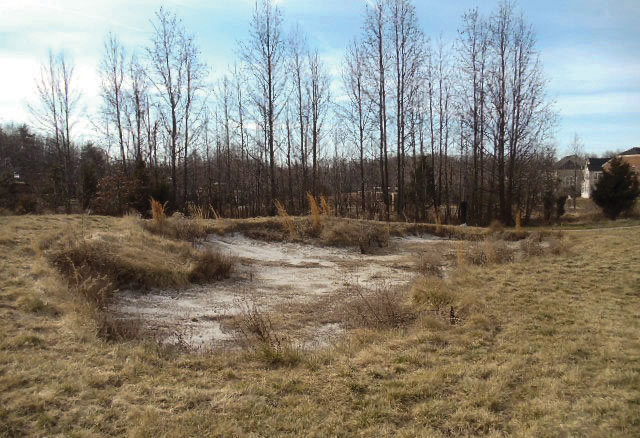
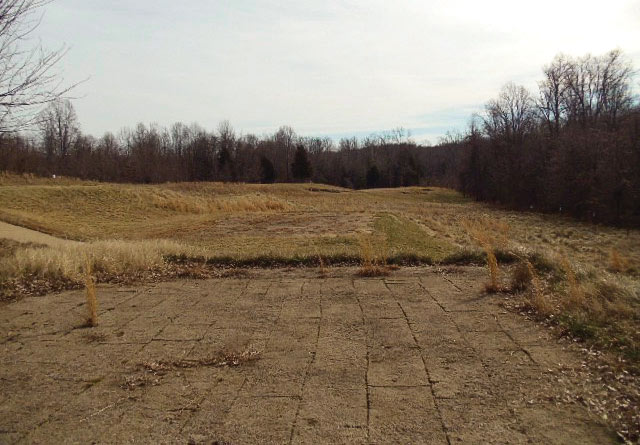
Top: Oak Creek Club in Upper Marlboro, Md., was closed in 2011, and just one year later, little bluestem, fescues and bluegrass had taken over this bunker. Agronomist Terry Buchen evaluated Oak Creek Club in 2012 for possible reopening. Bottom: A par-3 hole at Oak Creek Club in 2012. Photos by Terry Buchen
Golf courses have been coming and going nearly as long as there have been golf courses. In China today, they are being reconverted to agricultural, parkland, industrial or residential uses. During World War II, many courses were abandoned and never revived — think of the Lido Club, C.B. Macdonald’s mythic lost masterpiece on Long Island. Today, the site is home to a middle school. Other links courses (mainly in the U.K.) were converted to airfields — some were recovered, others were not. Dozens of early American golf courses were built not at seaside but within major metropolitan areas. Many of those were sold off for housing. Sometimes the clubs took that money and relocated farther into the country (hence the name “country” clubs). Other times, they simply took the money and ran.
Studying the clues
It can be fun to walk a property looking for clues of a golf course long ago abandoned. A berm here or some chocolate-drop mounding might remain. But the truth is, most overgrown courses are repurposed and utterly blotted out. For golf industry folk, that prospect is hard to stomach. And that’s part of the anxiety inherent in the spring of 2020 and the coronavirus pandemic. Intellectually, we know this will be the fate of too many golf courses in the months to come.
If a course does buy the farm, as it were, the most sanguine model may be that of Acacia Country Club. The Donald Ross design opened for play in 1925, in the Cleveland suburb of Lyndhurst. It ran into financial difficulties post-2008, and in 2012, club shareholders sold the property to The Conservation Fund. The Virginia-based nonprofit group paid more than $14 million for the property, well below “market rate.” Through anonymous donors, the Fund eventually donated the property to Cleveland Metroparks, which renamed it the Acacia Reservation.
Today, the 155 acres are deployed as parkland. They have not exactly gone fallow. Not all of them, at least. Nearly 6,000 native trees, plants and shrubs have been planted. Trails have been constructed. The streams feeding Euclid Creek have been exposed. Much of this has been billed as “restoration,” but a superintendent or architect knows better. This is a landscape management.
Cleveland Metroparks reports that more than half a million folks visited Acacia Reservation in its first five years of operation (beginning in 2014). Those people can be seen there today, running, biking, bird-watching, walking dogs or pushing strollers — at a safe physical distance, of course. Some of these folks are golfers, surely, but the broad example of Acacia is that golf courses without golfers can lead productive afterlives.
Hal Phillips is the managing director of golf and resorts for Mandarin Media, a public relations firm with offices in Portland, Maine; Park City, Utah; and Ho Chi Minh City, Vietnam. He is the former editor of Golf Course News.